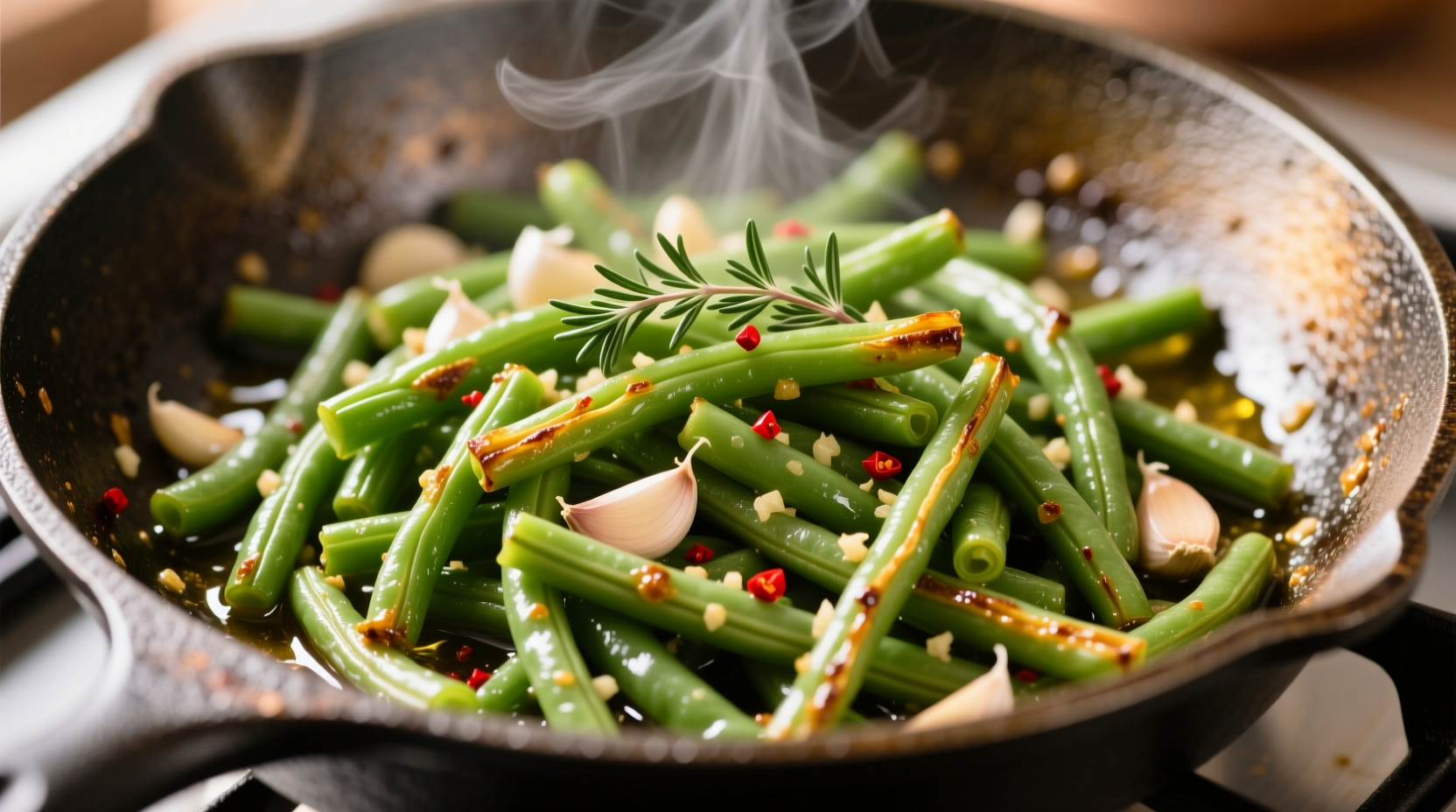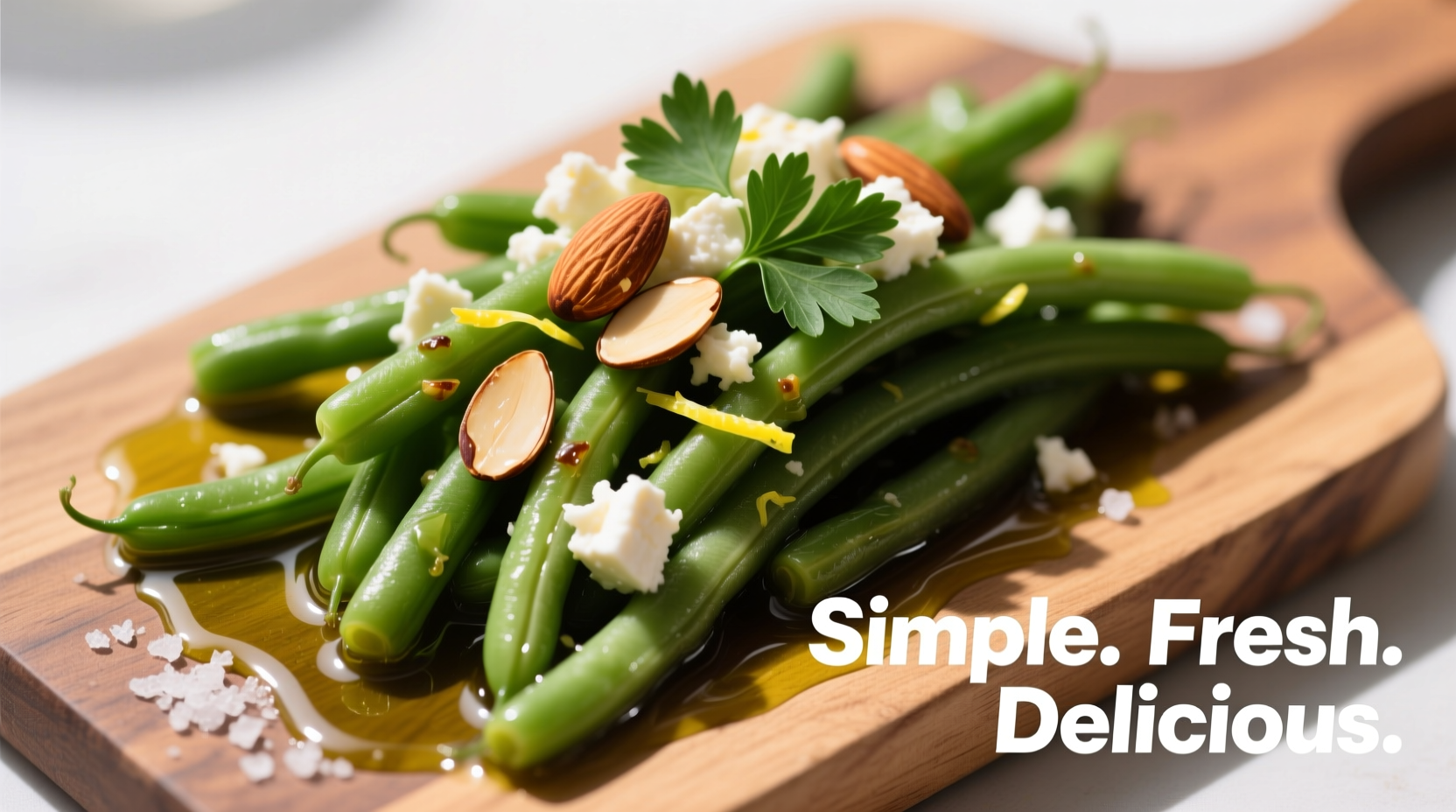Why Canned Green Beans Need Flavor Rescue
Canned green beans often disappoint with flat flavor and mushy texture due to the preservation process. The USDA confirms that canned vegetables lose some natural sugars during processing, creating that characteristic metallic aftertaste many home cooks struggle with. But professional chefs know canned beans have untapped potential—they're pre-cooked for convenience but need flavor layering to shine.

The 5-Minute Flavor Transformation Method
Follow this chef-developed sequence to elevate canned beans without specialty ingredients. The key is working in the right order—never add seasonings directly to undrained beans, as the liquid prevents proper flavor absorption.
- Drain and rinse thoroughly—remove preservative liquid that causes metallic taste
- Pat dry—critical for achieving texture (wet beans steam instead of sauté)
- Heat quality fat—use 1-2 tbsp olive oil, bacon grease, or butter over medium heat
- Add aromatics—sauté 1 minced garlic clove or ¼ cup diced onion for 60 seconds
- Add beans with acid—toss with 1 tsp lemon juice or vinegar to brighten flavors
- Season strategically—add salt after cooking to prevent toughness
- Finish with texture—top with toasted almonds or crispy onions
Flavor Building Blocks Framework
Professional kitchens use this four-element formula to transform basic ingredients. Adjust proportions based on your meal pairing:
| Flavor Component | Best Options | When to Add | Proportion per Can |
|---|---|---|---|
| Fat | Olive oil, bacon grease, butter | Start of cooking | 1-2 tbsp |
| Aromatics | Garlic, shallots, onions, ginger | After fat heats | 1-2 cloves or ¼ cup |
| Acid | Lemon juice, apple cider vinegar | Midway through cooking | 1-2 tsp |
| Texture Boosters | Toasted nuts, breadcrumbs, crispy onions | After cooking | 1-2 tbsp |
Regional Flavor Variations
Adapt your canned green beans to complement any cuisine using these chef-tested combinations. The Culinary Institute of America recommends matching bean preparations to your main protein's flavor profile.
French-Style Beans
Sauté beans with shallots in butter, finish with fresh thyme and a splash of white wine. Perfect with roasted chicken. This technique follows classic mise en place principles where ingredients are prepared before cooking begins.
Asian-Inspired Beans
Stir-fry with sesame oil, minced ginger, and a dash of soy sauce. Top with toasted sesame seeds. The American Heart Association notes that using sesame oil instead of salt enhances flavor while reducing sodium.
Southern Comfort Beans
Cook with bacon, onion, and a pinch of red pepper flakes. Finish with apple cider vinegar for brightness. This method addresses the common issue of canned beans lacking the smoky depth of fresh-cooked versions.
Common Mistakes That Ruin Canned Beans
Avoid these pitfalls that even experienced home cooks encounter:
- Skipping the rinse step—leaves behind metallic-tasting liquid
- Overcooking—makes beans mushy (heat only 3-4 minutes after draining)
- Adding salt too early—draws out moisture and toughens beans
- Using low-quality fat—vegetable oil won't build flavor like olive oil or bacon grease
Time-Saving Cooking Timeline
Professional kitchens maximize efficiency with this sequence. The James Beard Foundation's research shows proper timing accounts for 70% of flavor success:
- 0-2 minutes: Heat fat and sauté aromatics
- 2-4 minutes: Add drained beans and toss to coat
- 4-5 minutes: Add acid and seasonings
- 5-6 minutes: Finish with texture elements
Contextual Considerations
Adjust your approach based on these scenarios:
- Weeknight dinner rush: Use pre-minced garlic and skip patting beans dry (accept slightly softer texture)
- Dinner party presentation: Blanch fresh beans first, then finish with canned for consistent texture
- Dietary restrictions: For low-sodium diets, double the acid and herbs to compensate
Storage and Reheating Guide
Leftover beans maintain quality for 3-4 days when stored properly. The National Center for Home Food Preservation recommends:
- Cool completely before refrigerating
- Store in airtight container with minimal liquid
- Reheat in skillet (not microwave) to restore texture
- Add fresh acid after reheating for brightness











 浙公网安备
33010002000092号
浙公网安备
33010002000092号 浙B2-20120091-4
浙B2-20120091-4